Which Substance is the Best Transmitter of Solar Energy?
In recent years, there has been a substantial increase in the global use of sustainable energy sources, with solar power emerging as a frontrunner in the battle for a cleaner, greener future. The rising concern about environmental implications and the depletion of traditional energy supplies has pushed the investigation and development of novel technologies, resulting in significant advances in the field of solar energy.
As the demand for solar energy grows, manufacturers have worked tirelessly to improve the efficiency and performance of photovoltaic panels.
But which substance is the best transmitter of solar energy? Let’s find out:
Substances that are Best Transmitters of Solar Energy
Here, we’ll take a look at some substances which are best at transmitting solar energy:
1. Monocrystalline Solar Cells
Monocrystalline solar cells are the pinnacle of solar technology, distinguished by their purity of silicon and continuous crystal structure, which set them apart from other photovoltaic materials.
Monocrystalline solar cells are made of pure silicon, refined into ingots, and then carefully cut into panel components. This manufacturing technique creates a single, continuous silicon structure within each panel. This high level of purity and structural regularity greatly improves the efficiency and performance of monocrystalline cells.
The single-crystal structure of these cells allows for more direct electron flow, resulting in a more effective conversion of sunlight to energy. This inherent feature makes monocrystalline solar cells the ideal choice for applications that require maximum energy production.
Monocrystalline solar cells are recognized for their high efficiency. With efficiency rates of up to 22%, these cells surpass many other solar materials, especially in consumer applications. The improved efficiency corresponds to more power production for a given surface area, making them excellent for applications where space is limited.
The continuous crystal structure also adds to the lifespan of monocrystalline panels. These cells tend to last longer and function better in a variety of environments. They are especially well-suited for places with low light intensity and high temperatures, demonstrating strong performance that extends their applicability in a variety of situations.
However, despite their various advantages, monocrystalline solar cells have a greater manufacturing cost than other varieties of photovoltaic panels. The process of refining pure silicon while preserving a continuous crystal structure is more complex, resulting in higher production costs. As a result, the initial cost of monocrystalline panels is generally greater.
Another concern is the possibility of shading difficulties. Monocrystalline cells are made in the shape of cylinders and then cut into squares. This technique generates a large quantity of trash, and the panels’ continuous crystalline structure makes them more susceptible to efficiency loss when partially shadowed. As a result, users must be aware of shadowing, dirt, or snow cover to maintain peak performance and lifespan.
In short, monocrystalline solar cells are notable for their high efficiency, endurance, and constant performance under different situations. While they have a greater initial cost and shading requirements, their overall benefits make them an appealing option for people looking for high-performance solar systems.
2. Crystalline Silicon
Crystalline silicon is the most commonly used material in solar panels, accounting for up to 90% of all panels worldwide. In the United States, crystalline silicon serves as the dominant transmitter material in 95% of panels. Its ubiquity emphasizes its importance in solar energy transmission.
Crystalline silicon’s efficacy is due to its crystal structure. The cells are painstakingly organized in a crystalline form, making it an excellent solar energy transmitter. The crystal structure’s alignment is critical for improving solar energy transfer.
To improve energy transfer, other chemicals may be introduced into crystalline silicon. Coating crystalline silicon with particular compounds can lower reflection rates and increase light absorption, hence enhancing total energy transmission capacities. However, this enhancement frequently comes at a higher cost.
While crystalline silicon is a very efficient transmitter, achieving more performance comes at a cost. The use of auxiliary materials to improve efficiency raises manufacturing costs. Nonetheless, investing in crystalline silicon pays off since it can generate up to 22% more energy than other photovoltaic materials, demonstrating a sophisticated trade-off between cost and efficiency in solar panel technology.
3. Polycrystalline Silicon Cells
Polycrystalline silicon cells play an important role in the transmission of solar energy. These are made using a special manufacturing process that involves molding raw silicon into little squares. Unlike monocrystalline cells, these panels avoid the purifying step, resulting in a more cost-effective manufacturing procedure.
The removal of the purification stage contributes to polycrystalline cells’ cheaper production costs, making them an appealing alternative for individuals on a limited budget. This cost element has played a critical role in their broad acceptance, particularly in large-scale solar installations.
Polycrystalline silicon cells are less efficient than monocrystalline silicon cells, despite their lower cost. The crystal structure of silicon in polycrystalline cells is intrinsically less uniform, resulting in lower efficiency levels.
Polycrystalline cells typically have an efficiency rate of roughly 16 percent, although monocrystalline cells can reach up to 20 percent. This efficiency difference forces users to carefully assess the cost savings against the predicted energy production when selecting polycrystalline silicon panels for their solar systems.
To generate the same amount of energy as monocrystalline cells, polycrystalline silicon cells must be physically bigger to compensate for their poorer efficiency. This factor has a direct impact on the space required for solar projects that use polycrystalline panels.
Furthermore, polycrystalline silicon cells are more sensitive to high temperatures. High temperatures can impair their function and lifetime. Consumers must examine the local climate circumstances while determining which type of solar panels to install, especially if they are contemplating polycrystalline technology.
4. Amorphous Silicon
Thin film solar cells, commonly made of amorphous silicon, are a significant advancement in solar technology. These cells, particularly those built of amorphous silicon, are structurally different from standard crystalline silicon cells. Amorphous silicon, unlike crystalline silicon, lacks a defined crystal structure, which contributes to its unique features and uses.
Unlike crystalline silicon, amorphous silicon lacks a distinct crystal structure. While this property reduces its efficiency in converting sunlight into energy when compared to crystalline equivalents, it does have other benefits, notably in terms of flexibility and cost effectiveness.
One of the most notable characteristics of amorphous silicon is its lightweight and flexible nature. The lack of a solid crystal structure enables the production of thin and flexible solar panels. This feature opens up a variety of opportunities for incorporating solar technology into situations where traditional, bulky panels may be unfeasible.
The flexibility and versatility of amorphous silicon make it useful in a variety of applications. For example, thin film solar cells composed of amorphous silicon are extensively used in the production of solar-powered calculators. These panels’ lightweight and flexible design makes them excellent for small-scale, portable devices.
Furthermore, amorphous silicon panels perform better in shadowed settings than crystalline equivalents. Their capacity to generate power even when partially shaded makes them ideal for situations with intermittent sunshine or regions prone to shading, hence increasing total energy harvesting efficiency.
Long story short, while amorphous silicon may not be as efficient as crystalline silicon, its distinct features make it a desirable candidate in some applications. The lightweight and flexible nature of thin film solar cells allows for novel applications, and their adaptation to shadowed situations broadens the range of scenarios in which amorphous silicon can flourish.
5. Other Photovoltaic Materials (Gallium Arsenide)
As solar technology advances, researchers are looking at other photovoltaic materials beyond traditional possibilities. Gallium arsenide is one such substance that has gained interest in the solar industry.
Gallium arsenide, a combination of gallium and arsenic, is notable for its unique features in the field of solar energy transfer. Unlike typical silicon-based materials, gallium arsenide has a greater efficiency level, indicating its potential to revolutionize solar panel technology.
While gallium arsenide is extremely efficient in converting sunlight into energy, there are inherent problems associated with its use. One important disadvantage is the scarcity of gallium, a critical component in this combination. Gallium is categorized as a rare-earth element, which adds to the rarity of gallium arsenide and raises its production costs.
Furthermore, the presence of arsenic raises ecological and health problems. Arsenic is a toxic chemical, and the extraction and production procedures related with gallium arsenide may pose dangers if not carefully handled. As a result, the environmental effect and safety concerns must be properly assessed prior to broad use.
Despite its great efficiency, gallium arsenide’s suitability for home solar applications is still debated. The economic concerns, together with the possible environmental dangers, render it unsuitable for broad household usage. Gallium arsenide, on the other hand, may find a place in specialized situations where efficiency trumps cost, such as space exploration or cutting-edge industrial applications.
The home sector, with its emphasis on price and safety, may not now be the best market for gallium arsenide. However, current research and advances in material science may pave the path for overcoming these issues, making gallium arsenide a feasible alternative for wider usage in the future.
Ultimately, while gallium arsenide exhibits outstanding efficiency in solar energy transmission, its scarcity, expense, and related risks are substantial barriers to widespread household usage. As technology progresses and researchers address these hurdles, gallium arsenide’s potential to transform the solar energy environment should not be underestimated. It remains an exciting field of research for those looking for cutting-edge solutions in the pursuit of more efficient and sustainable energy sources.
Which Substance is the Best Transmitter of Solar Energy?
Crystalline Silicon and Monocrystalline solar cells are widely considered to be the best substances for the transmission of solar energy.
However, when it comes to transmission of solar energy, there is no clear-cut choice that ticks all the right boxes. There are various substances which are excellent at transmitting solar energy, and users should look into their unique pros and cons to decide which substance best fulfills their objectives.
结论 :
While there are many substances ideal for transmitting solar energy, it is necessary to point out that there is no one-size-fits-all solution. Monocrystalline cells may be the most efficient, but they are more expensive and need attentive care. Polycrystalline cells, on the other hand, are a less expensive option but at a lower efficiency level. Amorphous silicon offers flexibility and cost, albeit at the sacrifice of overall performance.
Users and corporations need to weigh the pros and cons of each substance separately, and then decide upon a solution which corresponds to their own particular vision and goals.
智能能源间隙 welcomes your feedback on the information provided. Please share your thoughts in the comment section below. For any personal inquiries, feel free to 联系我们 directly.


